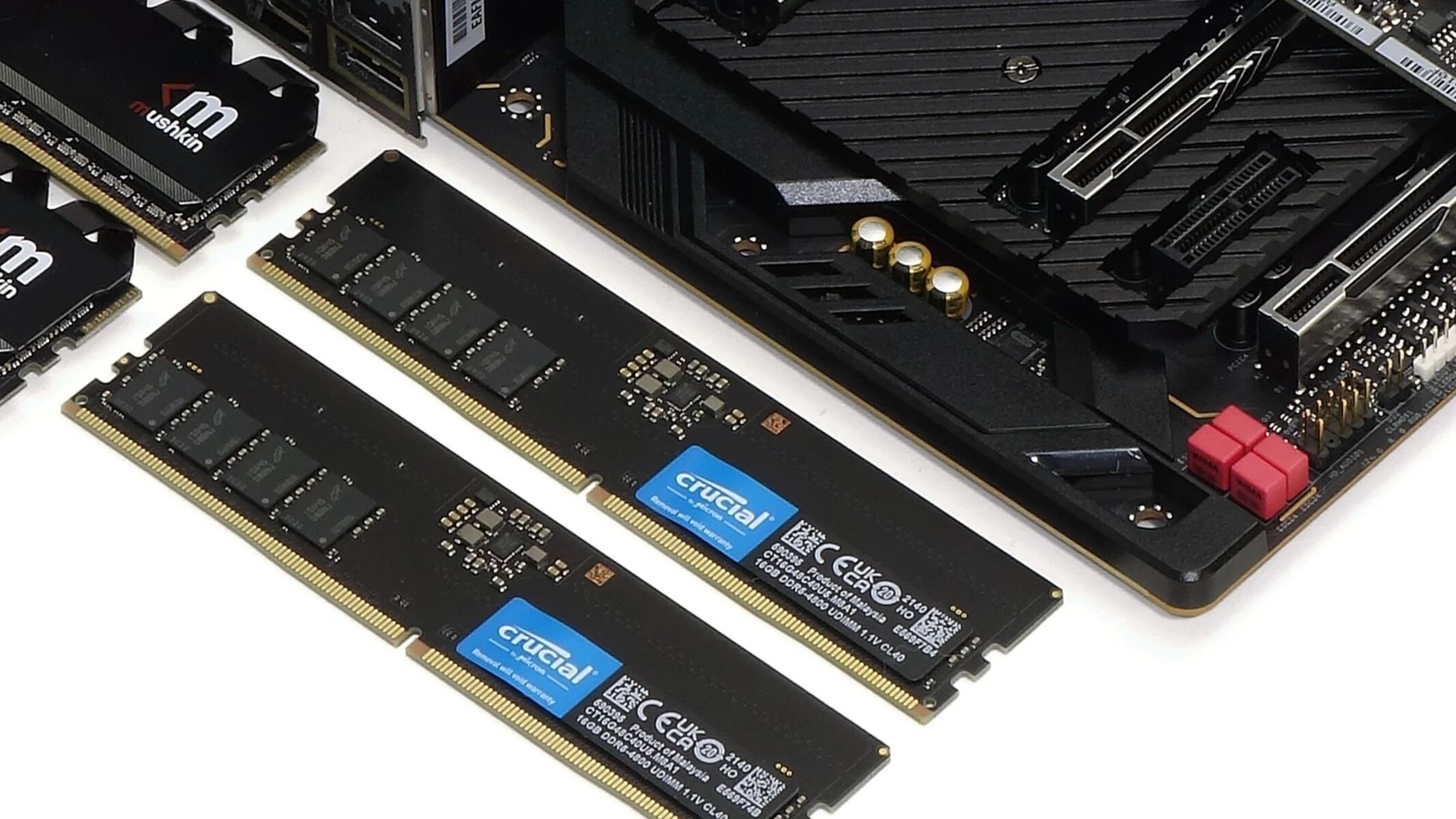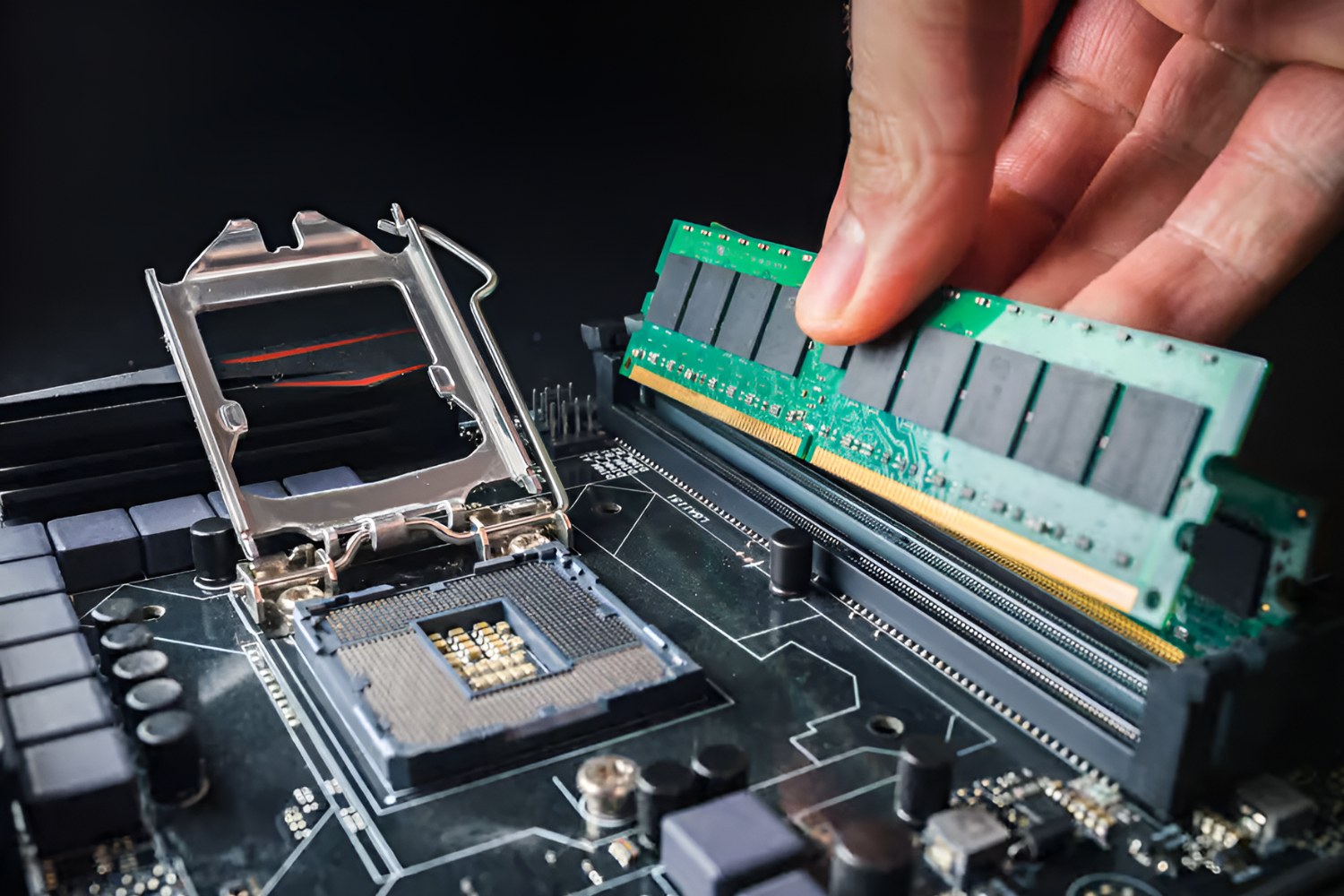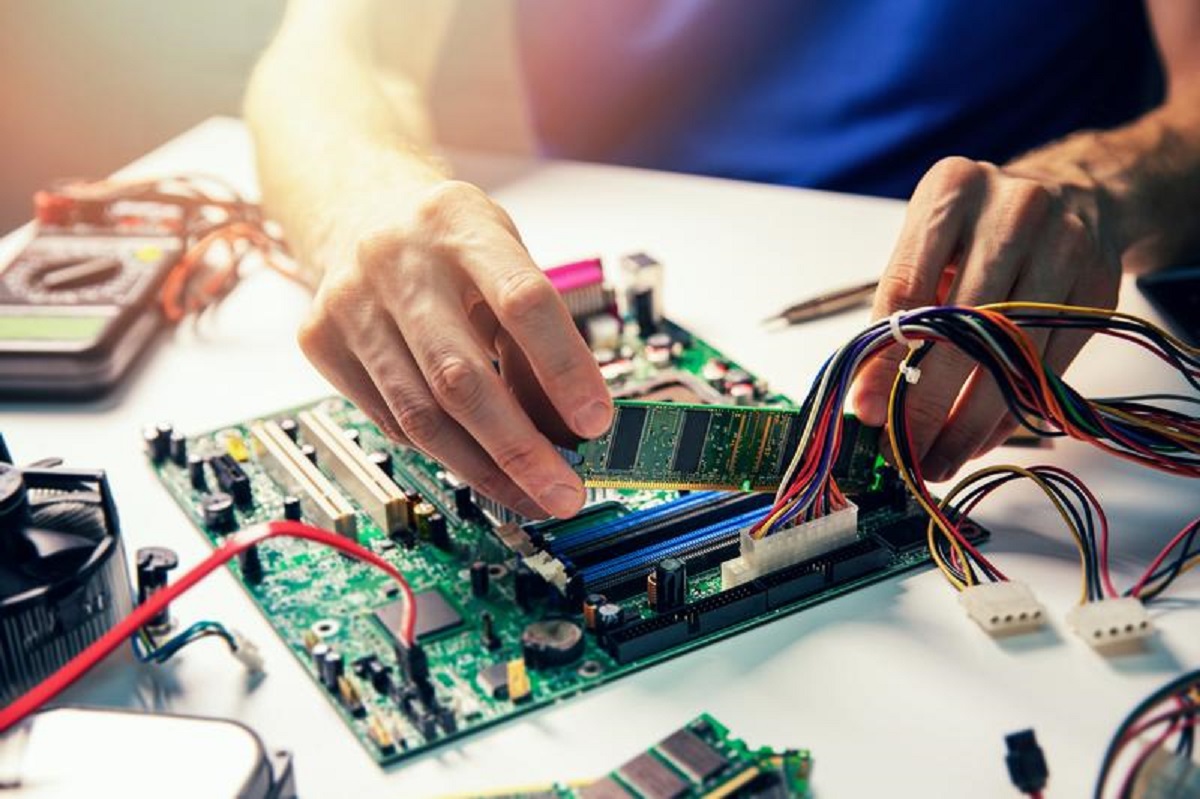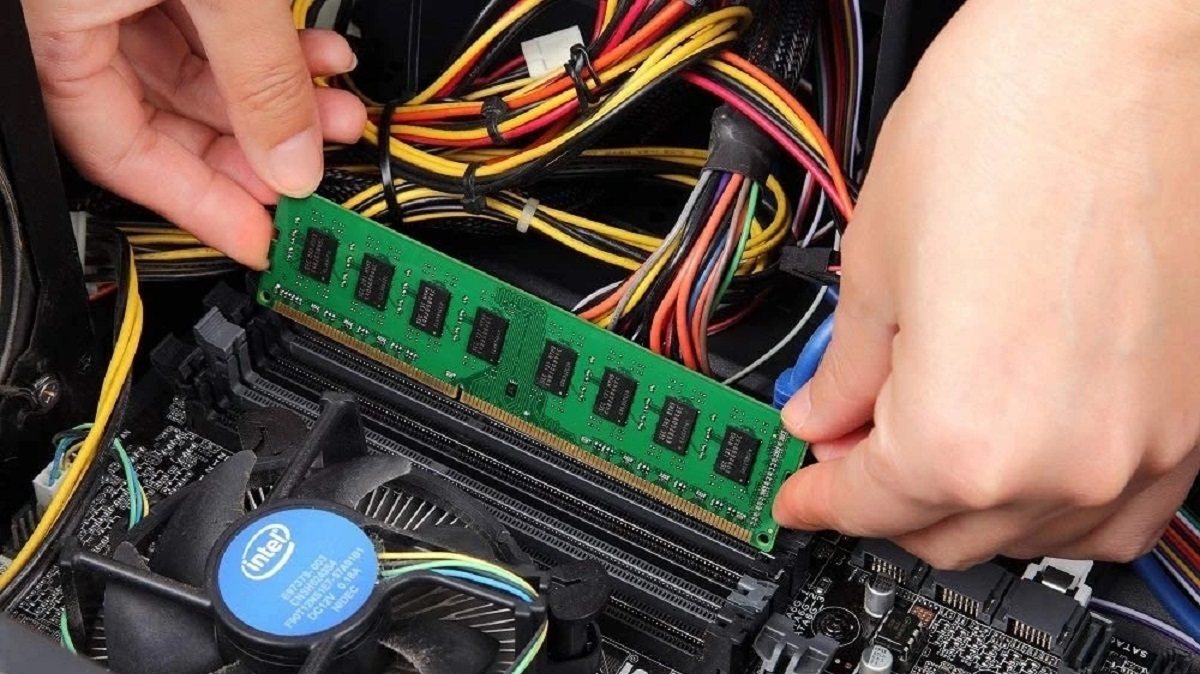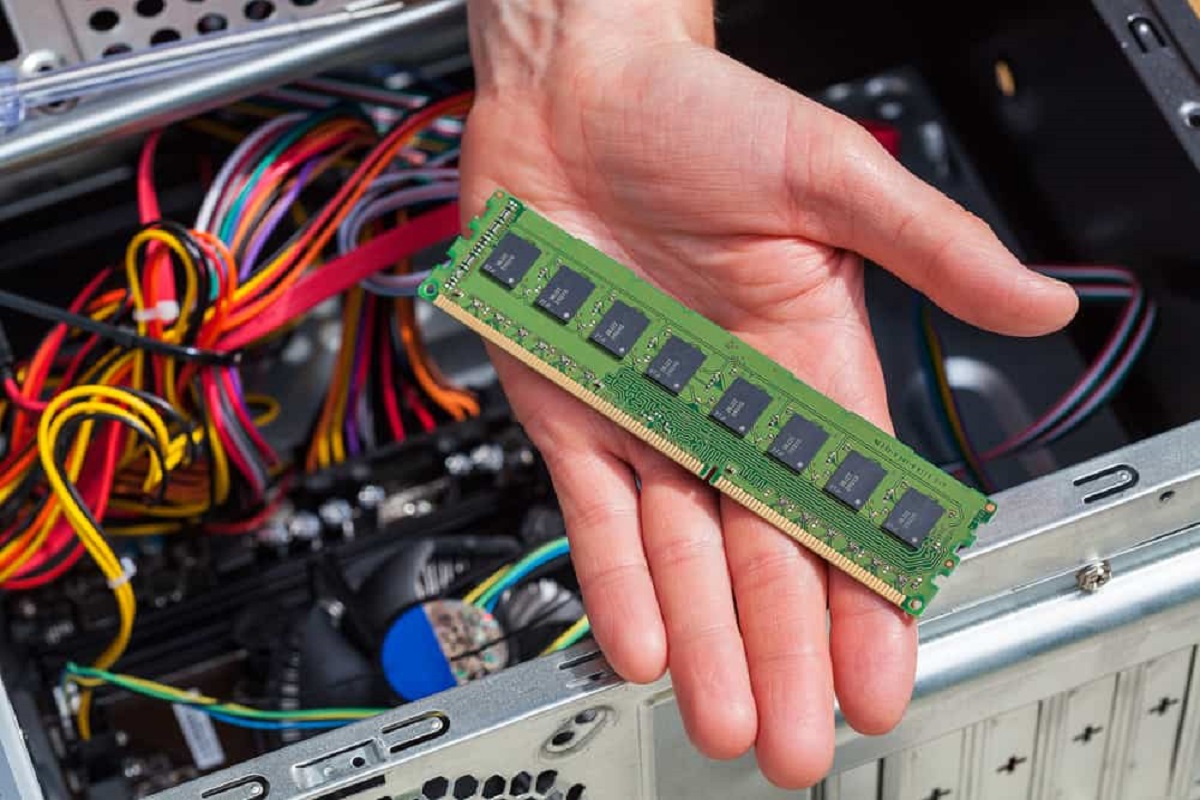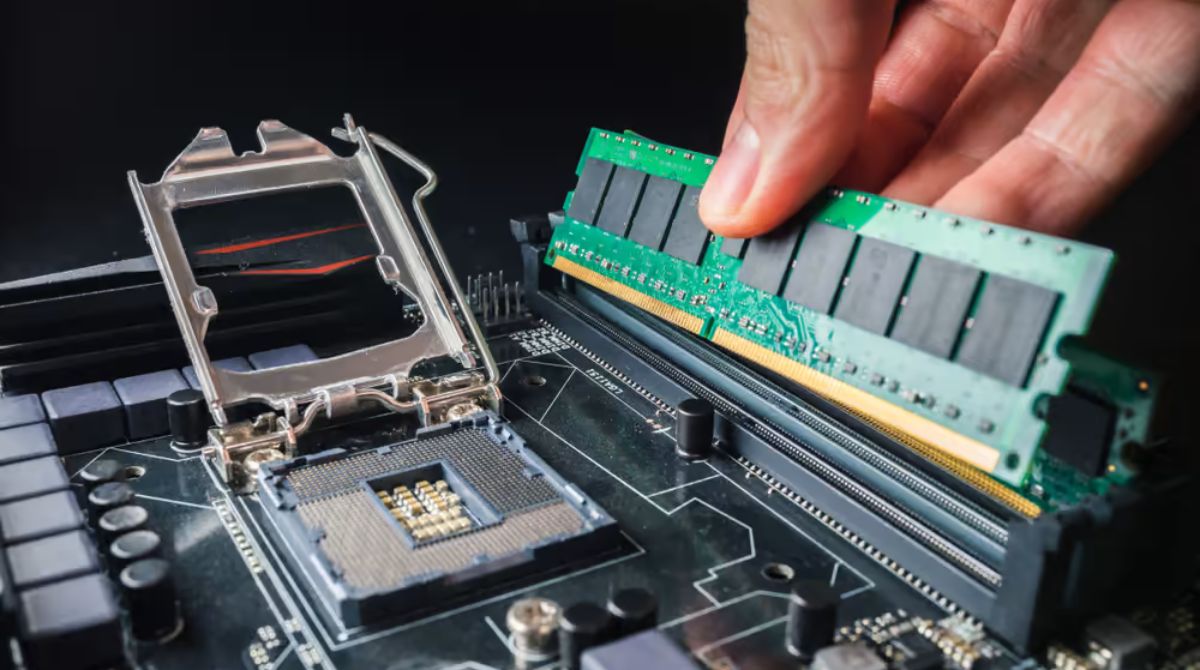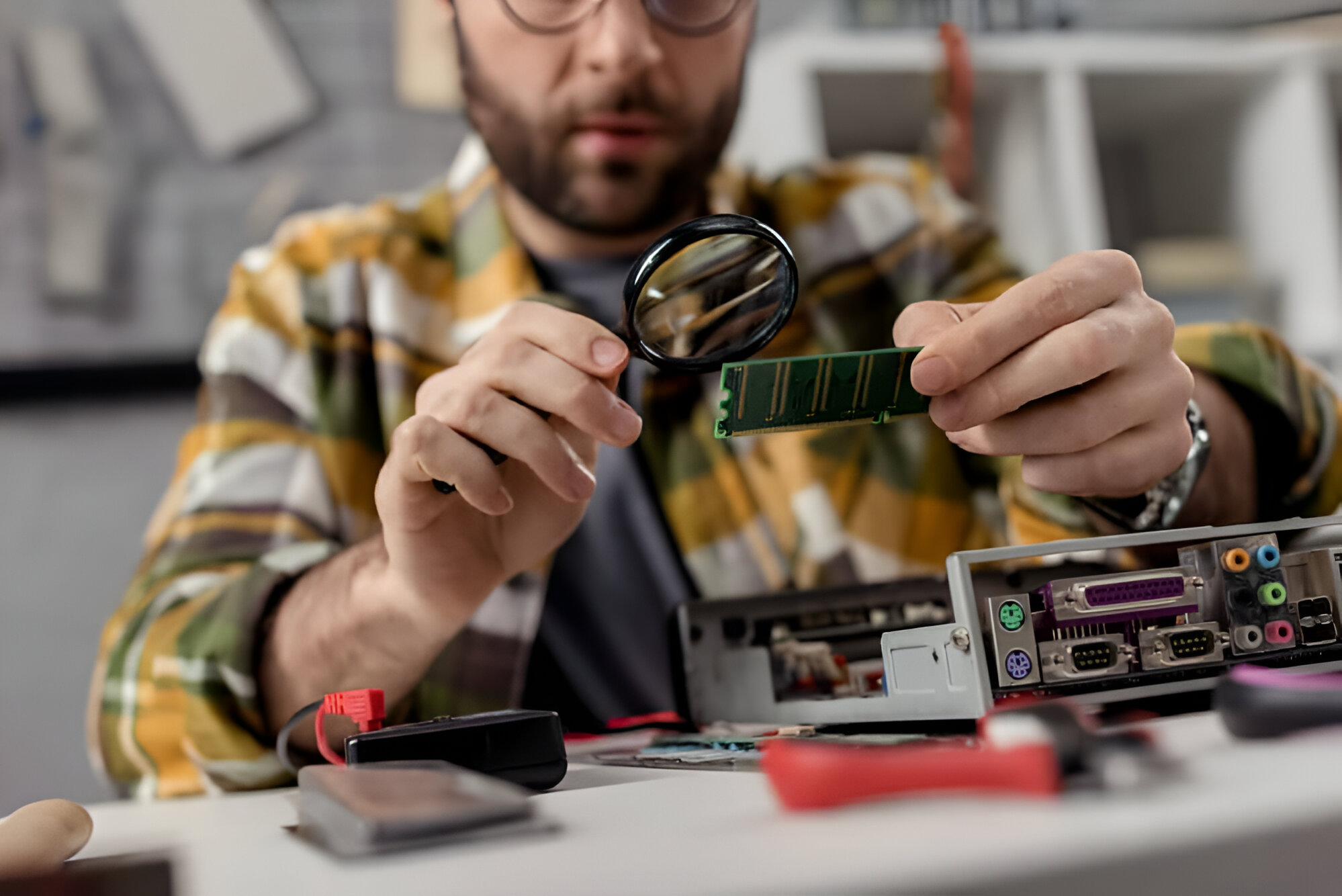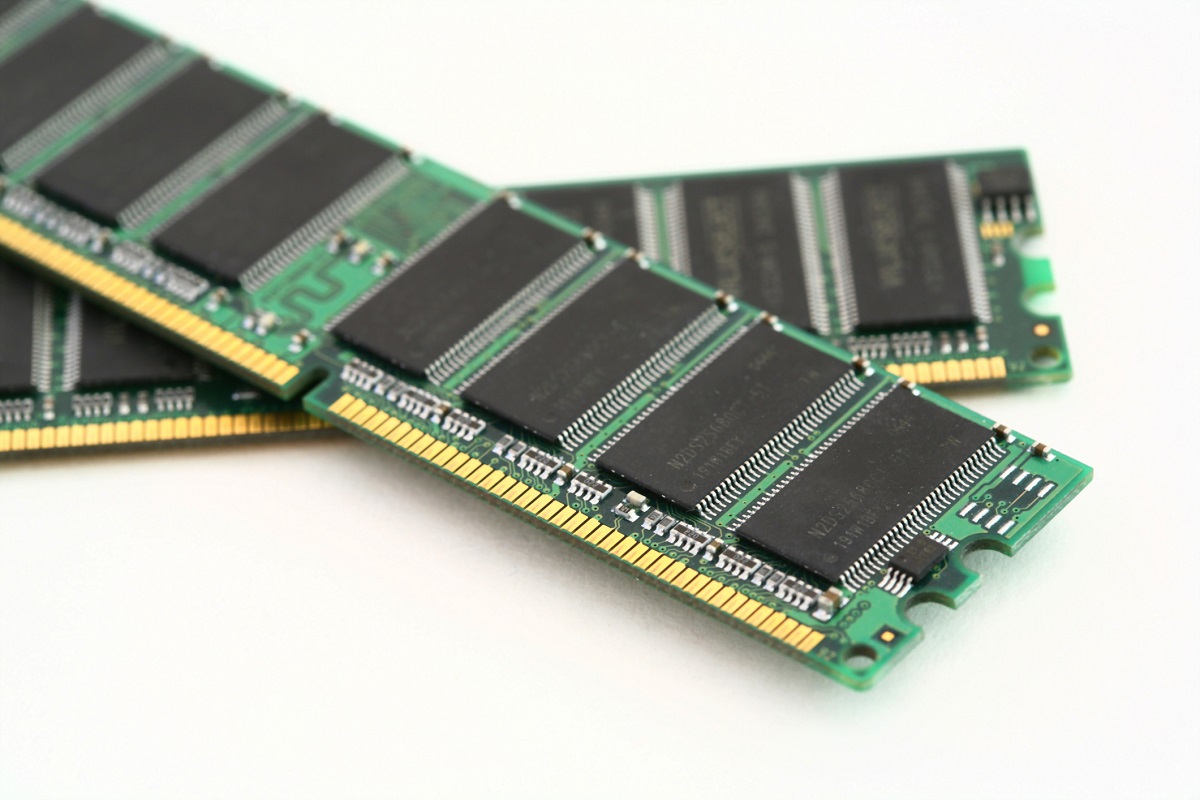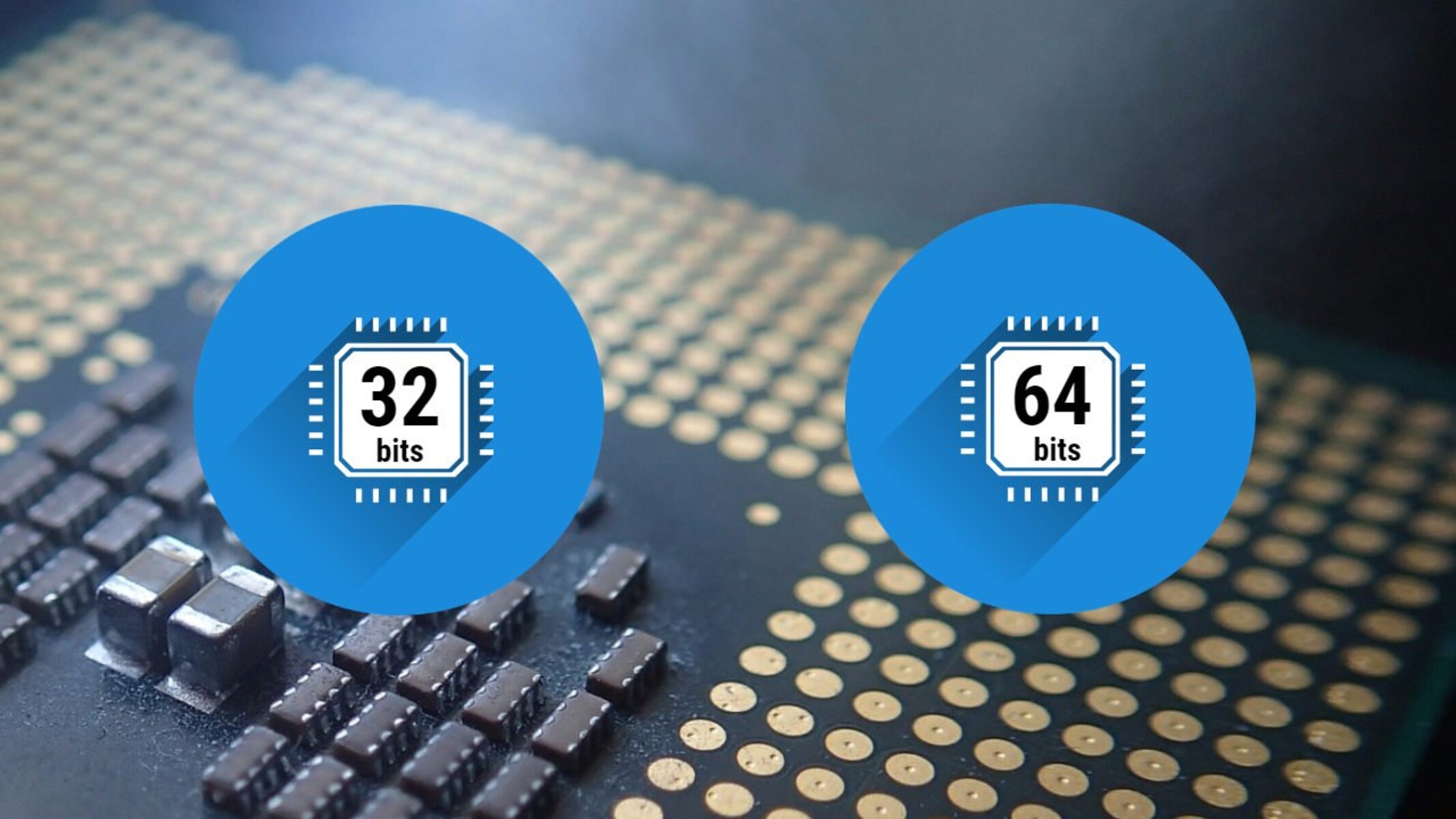Common Reasons for Hardware Reserved RAM
Having half of your RAM hardware reserved can be frustrating, as it limits the amount of available memory for your computer to utilize. Understanding the reasons behind this issue can help you troubleshoot and resolve the problem effectively. Below are some common causes for hardware reserved RAM:
1. Insufficient Physical Address Space: The most common cause is the limited physical address space available. 32-bit operating systems can only support up to 4GB of RAM, and some of this address space is reserved for hardware devices, leaving less memory available for your system.
2. BIOS Configuration: Your computer’s BIOS settings may be allocating a portion of your RAM for specific hardware devices such as integrated graphics cards. These settings can be adjusted to allocate less memory or disable the reserved allocation altogether, freeing up more RAM.
3. Integrated Graphics Card: If your computer has an integrated graphics card, it often reserves a portion of the RAM for graphics processing. This is particularly common in laptops or computers with lower-end graphics capabilities. Upgrading to a dedicated graphics card can free up the reserved memory.
4. Faulty RAM Modules: Faulty RAM modules can also lead to hardware reserved memory. If a module is defective, the system may reserve a portion of the RAM to prevent errors or crashes. Testing the RAM modules can help identify any faulty modules.
5. Operating System Limitations: Some versions of operating systems have limitations on the amount of RAM they can support. For instance, the 32-bit version of Windows 10 Home has a maximum usable RAM limit of 4GB. Upgrading to a 64-bit operating system can allow you to utilize more RAM.
6. Software Conflicts: Certain software programs or drivers may conflict with the operating system, resulting in reserved RAM. Updating drivers and firmware, as well as checking for any software conflicts, can help resolve this issue.
Understanding these common reasons can guide you in troubleshooting the hardware reserved RAM issue. In the next section, we will explore how to identify the hardware reserved memory on your system and provide steps to resolve the problem.
Insufficient Physical Address Space
One of the most common reasons for hardware reserved RAM is the limitation of physical address space. This issue is particularly prevalent in 32-bit operating systems, as they can only support a maximum of 4GB of RAM.
When you have 4GB of RAM installed, it may seem baffling that only half of it is available for use. However, the remaining memory is reserved for hardware devices, such as your graphics card, network adapter, and other peripheral components. These devices require a portion of the physical address space to communicate with the operating system.
The actual amount of hardware reserved memory may vary depending on the specific hardware configuration of your computer. Therefore, it is not uncommon to see a significant chunk of RAM being hardware reserved even when you have less than 4GB installed.
In some cases, even though you have a 64-bit operating system that can theoretically support more than 4GB of RAM, you may still experience hardware reserved memory if your computer’s hardware architecture is not capable of addressing or utilizing more memory.
If you find yourself facing the issue of insufficient physical address space, there are a few steps you can take to optimize your system’s memory usage:
1. Upgrade to a 64-bit Operating System: By upgrading to a 64-bit operating system, you can access more physical address space and utilize a larger amount of RAM. This allows your system to utilize more memory beyond the 4GB limit imposed by 32-bit systems.
2. Enable PAE (Physical Address Extension): If you have a 32-bit operating system and want to make use of more than 4GB of RAM, you can enable PAE within your operating system. PAE enables the system to access additional physical memory, although individual applications may still be limited to utilizing the 4GB address space.
3. Optimize RAM Usage: To make the most of the available RAM, close any unnecessary applications and background processes that may be consuming memory. Additionally, ensure that your system is running the latest updates and drivers to maximize memory efficiency.
4. Consider Upgrading Hardware: If you consistently find yourself needing more memory and encountering hardware reserved RAM, it may be time to upgrade your hardware components. Adding more RAM or replacing hardware devices that consume a significant amount of address space, such as an integrated graphics card, can help alleviate the issue.
By understanding the limitations of physical address space and implementing the above steps, you can optimize your system’s memory usage and minimize the impact of hardware reserved RAM.
BIOS Configuration
The BIOS (Basic Input/Output System) of your computer controls various hardware settings, including the allocation of system resources such as RAM. Improper settings in the BIOS can result in hardware reserved RAM. By adjusting the BIOS configuration, you may be able to free up the reserved memory and utilize it for your operating system and applications.
Here are some steps and considerations for addressing the hardware reserved RAM issue through BIOS configuration:
1. Accessing the BIOS: Restart your computer and look for the key or combination of keys to access the BIOS. Common keys include Del, F2, F10, or Esc. Consult your computer’s manual or the manufacturer’s website for specific instructions.
2. Look for Memory Settings: Once in the BIOS, navigate to the memory or system configuration section. Look for settings related to memory allocation or memory remapping. These settings may vary depending on your motherboard and BIOS version.
3. Adjust Memory Settings: If you find a memory related setting, such as “memory remap feature” or “memory hole remapping,” ensure it is enabled. This setting allows the operating system to utilize all available memory, including any hardware reserved RAM. Save the changes and exit the BIOS.
4. Reset BIOS to Default: If you are unsure about changing specific memory settings, you can reset the BIOS to its default settings. Look for an option like “reset to default” or “load optimized defaults.” This will revert all settings back to their factory configurations, which may resolve any conflicts causing hardware reserved RAM.
5. Update BIOS: Check if there are any available BIOS updates for your computer. Sometimes, manufacturers release BIOS updates that address memory allocation issues and improve overall system stability. Visit the manufacturer’s website and follow their instructions to update the BIOS.
6. Consult Manufacturer Support: If you are still experiencing hardware reserved RAM after adjusting the BIOS settings, it may be helpful to contact the manufacturer’s support for further assistance. They can provide specific guidance based on your computer’s make and model.
Make sure to save any changes you make in the BIOS and restart your computer. Upon reboot, check if the hardware reserved RAM has been reduced or eliminated. If not, proceed to the next troubleshooting steps to further diagnose and resolve the issue.
Integrated Graphics Card
An integrated graphics card is a common component found in many computers, particularly laptops or systems with lower-end graphics capabilities. This type of graphics card uses a portion of the system’s RAM for graphics processing, which can contribute to hardware reserved memory.
Here are some key points to consider when dealing with hardware reserved RAM caused by an integrated graphics card:
1. Understanding Memory Allocation: Integrated graphics cards rely on a technique called shared memory allocation. Instead of having dedicated memory like a discrete graphics card, an integrated graphics card borrows memory from the system’s RAM for its operations. This memory is reserved exclusively for graphics-related tasks, reducing the available system memory.
2. Adjusting Memory Allocation: In some cases, you may be able to adjust the amount of memory allocated to the integrated graphics card through the BIOS settings. Look for options related to “shared memory,” “graphics memory allocation,” or similar terms. Decreasing the allocated memory can potentially free up more RAM for the operating system and applications.
3. Upgrading to a Dedicated Graphics Card: If you frequently experience hardware reserved RAM due to the integrated graphics card, upgrading to a dedicated graphics card can be a solution. A dedicated graphics card has its own dedicated memory and does not rely on stealing memory from the system’s RAM. This not only eliminates the hardware reserved memory issue but also improves graphics performance.
4. Balancing Graphics and System Performance: It’s important to note that reducing the memory allocation for the integrated graphics card may impact graphics performance. If you primarily use your computer for graphics-intensive tasks such as gaming or video editing, it’s advisable to strike a balance between graphics performance and system memory utilization.
5. Checking Driver Updates: Ensure that you have the latest drivers installed for your integrated graphics card. Graphics card drivers often include optimizations and bug fixes that can improve overall performance and memory management. Visit the manufacturer’s website or use a driver update tool to check for and install any available updates.
Remember that the options for adjusting integrated graphics card settings may vary depending on the specific hardware and BIOS version. Consult the manufacturer’s documentation or support resources for detailed instructions specific to your computer.
By understanding how integrated graphics cards utilize memory and considering the above steps, you can effectively manage hardware reserved RAM and optimize memory allocation for your system’s performance needs.
Faulty RAM Modules
If you are experiencing hardware reserved RAM, one possible cause could be faulty RAM modules. When a RAM module is defective, the system may reserve a portion of the available memory to prevent errors or crashes. Here are some key points to consider when dealing with hardware reserved RAM caused by faulty RAM modules:
1. Symptoms of Faulty RAM: Faulty RAM modules can manifest in various ways. You may experience frequent crashes, system freezes, or error messages indicating memory issues. If you suspect faulty RAM, it’s important to properly diagnose and address the problem.
2. Testing RAM Modules: The first step in troubleshooting faulty RAM is to test each module individually. Remove all but one RAM module and test the system. If the problem persists, replace that module with another one and repeat the testing process. This will help identify any specific faulty modules.
3. Using Memory Diagnostic Tools: Many operating systems, such as Windows, have built-in memory diagnostics tools. These tools can perform comprehensive tests to check for any errors in the RAM modules. Run these diagnostics to pinpoint any faulty modules that are causing the hardware reserved RAM issue.
4. Replacing Faulty RAM: If you find a faulty RAM module, it is advisable to replace it with a new one. Do thorough research to ensure compatibility and purchase RAM modules from reputable manufacturers or trusted sources. Make sure to follow proper installation procedures when replacing the faulty module.
5. Reseating RAM Modules: It’s also possible that the hardware reserved RAM issue is caused by loose connections between the RAM modules and the motherboard. Reseating the RAM modules by removing them and securely reinserting them into their slots can sometimes resolve the issue.
6. Seek Professional Assistance: If you are unsure about diagnosing or replacing faulty RAM modules, it may be better to seek professional assistance. Computer repair services or experienced technicians can diagnose the issue accurately and provide appropriate solutions.
It’s worth noting that faulty RAM modules are not always the cause of hardware reserved RAM. However, it is an important aspect to consider when troubleshooting memory-related issues. By identifying and resolving any faulty RAM modules, you can potentially eliminate the hardware reserved RAM problem and ensure optimal performance and stability of your computer system.
Operating System Limitations
Another common reason for hardware reserved RAM is due to limitations imposed by the operating system. Different versions of operating systems have varying restrictions on the total amount of RAM they can utilize. Understanding these limitations can help you determine if your operating system is the cause of the hardware reserved RAM issue. Here are some key points to consider:
1. 32-bit vs. 64-bit: The most significant factor influencing RAM limitations is whether you are running a 32-bit or 64-bit operating system. A 32-bit system can address a maximum of 4GB of RAM, with some of that memory being reserved for hardware usage. This means that even if you have more than 4GB of RAM installed, you will not be able to fully utilize it. In contrast, a 64-bit operating system can theoretically support much larger amounts of RAM, providing you have the appropriate hardware configuration.
2. Limitations of 32-bit Systems: If you are running a 32-bit operating system, it’s important to note that the actual usable RAM may be significantly less than 4GB. As mentioned earlier, some portion of the address space is reserved for hardware devices, resulting in a reduced available memory for the operating system and applications. The exact amount of reserved memory may vary depending on your specific hardware configuration.
3. Operating System Versions: Different editions or versions of an operating system may have different RAM limitations. For example, the 32-bit version of Windows 10 Home has a maximum usable RAM limit of 4GB, while the 64-bit version has a much higher limit. Verify the specific RAM limitations of your operating system to determine if it aligns with your hardware configuration.
4. Upgrading to a 64-bit Operating System: If your computer hardware supports it, consider upgrading from a 32-bit to a 64-bit operating system. This will allow you to fully utilize larger amounts of RAM beyond the limitations of a 32-bit system. However, keep in mind that upgrading the operating system may also require updating drivers and ensuring software compatibility.
5. Plan Your RAM Configuration: When choosing an operating system and setting up your computer, it is important to consider your memory requirements. If you anticipate needing more than 4GB of RAM, it is advisable to select a 64-bit operating system from the outset to avoid potential limitations in the future.
Understanding the RAM limitations imposed by your operating system is crucial for effectively troubleshooting hardware reserved RAM. By upgrading to a 64-bit system or ensuring that your current operating system aligns with your hardware configuration, you can make the most of your available RAM and minimize any hardware reserved memory.
Software Conflicts
Software conflicts can also contribute to the issue of hardware reserved RAM. In some cases, certain software programs or drivers can conflict with the operating system, causing memory allocation issues and resulting in hardware reserved RAM. Identifying and resolving these conflicts is essential for optimizing your system’s memory usage. Here are some key points to consider:
1. Outdated or Incompatible Drivers: Outdated or incompatible drivers can cause conflicts with the operating system and result in hardware reserved RAM. Ensure that all your hardware drivers are up to date by visiting the manufacturer’s website and downloading the latest versions. Updating the drivers can resolve compatibility issues and improve memory allocation.
2. Third-Party Software: Certain third-party software programs can conflict with the operating system and cause memory allocation problems. If you recently installed any new software before experiencing the hardware reserved RAM issue, try uninstalling it to see if the problem resolves. Pay attention to software that directly interacts with memory management or system resources.
3. Memory-Intensive Applications: Memory-intensive applications or processes can sometimes monopolize the available RAM, resulting in hardware reserved RAM. Closing unnecessary applications or disabling memory-intensive background processes can help free up memory for the operating system and other applications.
4. Resource Monitoring: Utilize system monitoring tools to identify any processes or applications that are consuming excessive amounts of memory. Task Manager and Resource Monitor in Windows, for example, can provide insights into memory usage and help identify software conflicts. Close or optimize the resource-intensive software to alleviate the memory allocation issues.
5. Software Updates and Patches: Keep your operating system and software applications updated with the latest patches and updates. Software developers often release updates to address compatibility issues, improve memory management, and fix bugs that may cause hardware reserved RAM. Regularly check for updates and install them to ensure optimal performance.
6. Fresh Operating System Installation: If the hardware reserved RAM issue persists and you have exhausted all other troubleshooting steps, a fresh installation of the operating system may be required. This will remove any software conflicts or system configurations that are causing the memory allocation issues. However, remember to backup your data and ensure you have the necessary installation media and product keys before proceeding with a fresh installation.
Resolving software conflicts can be a complex process, requiring careful analysis and investigation. If you are uncertain about how to identify or address software conflicts, consider seeking assistance from a knowledgeable professional or contacting the software vendors for support. By addressing software conflicts, you can optimize memory usage and effectively eliminate hardware reserved RAM.
How to Troubleshoot Hardware Reserved RAM
If you are facing the frustrating issue of hardware reserved RAM, there are several steps you can take to troubleshoot and resolve the problem. By following these troubleshooting methods, you can effectively identify and mitigate the causes of hardware reserved RAM. Here’s a step-by-step guide:
1. Checking System Information: Start by checking the system information to determine how much RAM is installed and how much is being reported as hardware reserved. To do this, right-click on the “Start” button, select “System,” and navigate to the “System” or “System Overview” section. Here, you can view the installed memory and the amount being reported as hardware reserved.
2. Adjusting BIOS Settings: Access the BIOS configuration by restarting your computer and pressing the respective key or key combination during the boot process (usually Del, F2, F10, or Esc). Look for memory-related settings such as “memory remap feature” or “memory hole remapping.” Adjust these settings to allocate less memory for hardware devices or disable the reserved allocation altogether.
3. Updating Drivers and Firmware: Ensure that all your drivers, especially for your motherboard and graphics card, are up to date. Visit the manufacturers’ websites and download the latest drivers and firmware updates. Updating these drivers can address compatibility issues and improve memory management.
4. Testing RAM Modules: Run memory diagnostic tests to check for any issues with your RAM modules. Use built-in tools like Windows Memory Diagnostic or third-party software like Memtest86 to test individual RAM modules for errors. Replace any faulty modules to alleviate hardware reserved RAM caused by defective RAM.
5. Checking for Software Conflicts: Identify any software or drivers that may be conflicting with the operating system’s memory management. Uninstall recently installed software if the hardware reserved RAM issue started after its installation. Use system monitoring tools to identify resource-intensive applications and close unnecessary ones to free up memory.
6. Consider Hardware Upgrades: If the above steps do not resolve the hardware reserved RAM issue, consider upgrading your hardware components. This could involve adding more RAM to increase the available memory or upgrading to a dedicated graphics card to eliminate the memory allocated for integrated graphics.
7. Seek Professional Assistance: If you are unable to troubleshoot and resolve the hardware reserved RAM issue on your own, consider seeking assistance from a knowledgeable professional or contacting the support services of your computer’s manufacturer. They can provide further guidance and specialized solutions tailored to your specific hardware and software configuration.
Remember to take proper precautions and backups before making any changes to your system’s settings or hardware components. It’s always a good practice to document any changes you make and create restore points or system backups to easily revert any modifications if needed.
By following these troubleshooting methods, you can diagnose and resolve the hardware reserved RAM issue, optimizing your system’s memory usage and ensuring peak performance for your computer.
Checking the System Information
Before delving into troubleshooting hardware reserved RAM, it is important to gather essential information about your system’s memory configuration. Checking the system information allows you to identify the amount of RAM installed and determine how much is being reported as hardware reserved. Here’s how you can check the system information to investigate the hardware reserved RAM issue:
1. Windows Operating System: If you are using a Windows operating system, you can access the system information through the Control Panel. Right-click on the “Start” button, select “System,” and navigate to the “System” or “System Overview” section. Here, you will see the installed memory (RAM) and the amount being reported as hardware reserved.
2. Mac OS: For Mac users, go to the Apple menu and select “About This Mac.” In the window that appears, you can view the installed memory (RAM) and determine if any of it is being hardware reserved.
3. Linux: Linux users can use various commands to check system information. “free -h” in the terminal provides an overview of the system’s memory, including total memory, used memory, free memory, and buffers/cache. The “dmidecode” command can also be used to gather information about the installed memory modules.
4. Seeing the Hardware Reserved RAM: When checking the system information, you will observe the total amount of installed RAM alongside the amount being reported as hardware reserved. Hardware reserved memory is reserved by the hardware devices in your system, such as graphics cards or network adapters, and is not available for use by the operating system and applications.
5. Comparing with Physical Memory: If you have recently installed new RAM modules or suspect an issue with the memory configuration, verify that the installed RAM matches the physical memory present in your system. Ensure that all RAM modules are securely inserted into their slots and are compatible with your motherboard.
6. Tracking Changes Over Time: It can be helpful to periodically check the system information to monitor any changes in the hardware reserved RAM. If you notice a sudden increase in hardware reserved memory, it may indicate a new hardware device or a software conflict affecting memory allocation. This information will be valuable when troubleshooting the issue.
Checking the system information is the first step in troubleshooting hardware reserved RAM, as it provides crucial details about the memory configuration of your system. With this information, you can proceed to adjust BIOS settings, update drivers, test RAM modules, and address any software conflicts to optimize memory usage and resolve the hardware reserved RAM issue effectively.
Adjusting BIOS Settings
The BIOS (Basic Input/Output System) of your computer controls various hardware settings, including the allocation of system resources such as RAM. By adjusting the BIOS configuration, you may be able to free up hardware reserved RAM and utilize it for your operating system and applications. Here’s how you can adjust the BIOS settings:
1. Accessing the BIOS: Restart your computer and look for the key or combination of keys to access the BIOS. The specific key may vary depending on your computer’s manufacturer, but commonly used keys include Del, F2, F10, or Esc. Consult your computer’s manual or the manufacturer’s website for exact instructions.
2. Navigating to Memory Settings: Once in the BIOS, navigate to the memory or system configuration section. The exact location of this section may vary depending on the BIOS version and motherboard manufacturer. Look for settings related to memory allocation, memory remapping, memory hole remapping, or similar terms.
3. Adjusting Memory Settings: Within the memory settings, you may find options to adjust memory allocation or memory remapping. If these options are available, ensure they are enabled or set to the desired values. Options may include “memory remap feature,” “memory hole remapping,” or similar terms. Adjusting these settings can reallocate memory and reduce the amount of hardware reserved RAM.
4. Saving Changes and Exiting: After adjusting the memory settings, save the changes and exit the BIOS. Depending on the BIOS interface, you may need to press a specific key or select the “Save and Exit” option. Make sure to confirm the prompt to save changes before exiting the BIOS.
5. Restarting the Computer: Upon exiting the BIOS, the computer will restart to apply the changes you made. Allow the computer to boot up and check the system information to see if the hardware reserved RAM has been reduced or eliminated.
6. Resetting BIOS to Default: If adjusting the memory settings in the BIOS does not resolve the hardware reserved RAM issue, you can try resetting the BIOS to its default settings. Look for options such as “reset to default,” “load optimized defaults,” or similar terms. This will revert all BIOS settings back to their factory configurations, which may resolve any conflicts causing hardware reserved RAM.
Remember that adjusting the BIOS settings should be done with caution, as improper changes can affect the stability and functionality of your computer. If you are unsure about certain settings or their implications, it is recommended to consult the motherboard’s documentation or seek assistance from a knowledgeable professional.
By adjusting the BIOS settings, you can potentially free up hardware reserved RAM and maximize the available memory for your operating system and applications. However, if the hardware reserved RAM issue persists, further troubleshooting steps such as updating drivers, testing RAM modules, or addressing software conflicts may be necessary.
Updating Drivers and Firmware
Outdated or incompatible drivers and firmware can often contribute to hardware reserved RAM issues. By ensuring that all your hardware components have the latest drivers and firmware installed, you can address compatibility issues and improve memory management. Here’s how you can update drivers and firmware to troubleshoot the hardware reserved RAM problem:
1. Identifying Outdated Drivers: Start by identifying any outdated drivers that may be causing conflicts with memory management. You can do this by visiting the manufacturer’s website for each hardware component installed in your system, such as the motherboard, graphics card, and network adapter. Look for driver updates specifically related to memory or system resources.
2. Manufacturer’s Driver Download Section: Locate the driver download section on the manufacturer’s website for each hardware component. Ensure that you select the correct model and version of your hardware component to download the appropriate driver files. Be cautious when downloading drivers from third-party websites, as they may not be reliable sources.
3. Backing Up Current Drivers: Before updating any drivers, it is recommended to back up your current drivers. This allows you to revert to the previous version if the updated driver causes any issues. Use driver backup tools or manually copy the driver files to a separate location for safekeeping.
4. Updating Drivers: Once you have downloaded the latest drivers, install them one by one for each hardware component. Follow the installation instructions provided by the manufacturer and choose the appropriate options. Restart your computer after each driver installation to ensure the changes take effect.
5. Updating Firmware: In addition to drivers, firmware updates can also address compatibility issues and improve memory management. Check the manufacturer’s website for firmware updates for your system’s components, such as the BIOS, graphics card, or SSD. Follow the provided instructions precisely to update the firmware, as incorrect firmware updates can lead to system instability.
6. Automatic Driver Update Tools: If manually updating drivers seems daunting, you can utilize automatic driver update tools. These tools scan your system, detect outdated drivers, and automatically download and install the latest versions. However, exercise caution when using third-party driver update tools and verify their reliability before relying on them.
7. Regular Update Check: Keep a habit of regularly checking for driver and firmware updates. Hardware manufacturers often release updates to address bugs, improve stability, and enhance compatibility with the operating system. Staying updated can prevent hardware conflicts and subsequently reduce the chances of hardware reserved RAM.
By updating drivers and firmware, you can address compatibility issues, improve memory management, and potentially resolve the hardware reserved RAM problem. Remember to restart your computer after each driver installation or firmware update to ensure the changes take effect. If the issue persists, further troubleshooting steps such as testing RAM modules or addressing software conflicts may be necessary.
Testing RAM Modules
Faulty RAM modules can also contribute to the issue of hardware reserved RAM. When a RAM module is defective, the system may reserve a portion of the available memory to prevent errors or crashes. By testing the RAM modules, you can identify any faulty modules and take appropriate action. Here’s how you can test the RAM modules to troubleshoot hardware reserved RAM:
1. Testing Individually: The first step in testing RAM modules is to test each module individually. Start by removing all but one RAM module and powering on your computer. If the problem persists, replace that module with another one and repeat the testing process. This helps identify if any specific module is causing the hardware reserved RAM issue.
2. Running Memory Diagnostic Tools: Use memory diagnostic tools to perform comprehensive tests on the RAM modules. Many operating systems, including Windows, have built-in memory diagnostics tools. In Windows, you can open the Start menu, search for “Windows Memory Diagnostic,” and select the tool to run the diagnostic. Alternately, you can use third-party software like Memtest86, which creates a bootable USB or CD/DVD to perform the memory tests.
3. Interpreting Diagnostic Results: After running the memory diagnostic tests, review the results to identify any errors or issues detected. The diagnostic tool will provide information on which module, if any, is causing problems. Pay attention to the error messages and seek corresponding solutions to address the faulty RAM modules.
4. Replacing Faulty RAM Modules: If you find any faulty RAM modules, it is advisable to replace them with new ones. Ensure that you purchase RAM modules that are compatible with your motherboard and have the necessary capacity and speed. Opt for reputable manufacturers or trusted sources to ensure the quality and reliability of the replacement modules.
5. Reseating RAM Modules: In some cases, loose connections between RAM modules and the motherboard can cause hardware reserved RAM. Before replacing RAM modules, try reseating them by firmly removing each module and reinserting it into its slot. Ensure that the modules are properly aligned and seated securely.
6. Seeking Professional Assistance: If you are uncertain about diagnosing or replacing faulty RAM modules, or if testing reveals conflicting results, it is best to seek help from a knowledgeable professional. Computer repair services or experienced technicians can accurately diagnose the issue and provide appropriate solutions.
Testing the RAM modules is an important step in troubleshooting hardware reserved RAM. By identifying and addressing faulty RAM modules, you can resolve the issue and optimize your system’s memory usage. However, if the hardware reserved RAM problem persists even after testing and replacing RAM modules, further troubleshooting steps such as updating drivers, adjusting BIOS settings, or addressing software conflicts may be necessary.
Checking for Software Conflicts
Software conflicts can often contribute to the problem of hardware reserved RAM. Certain software programs or drivers may conflict with the operating system, resulting in memory allocation issues and the reservation of RAM. By identifying and resolving these conflicts, you can optimize your system’s memory usage. Here’s how you can check for software conflicts to troubleshoot hardware reserved RAM:
1. Identifying Recently Installed Software: Start by identifying any software programs or drivers that were recently installed before the hardware reserved RAM issue started. Pay particular attention to any software that is directly related to memory management, hardware devices, or system resources.
2. Uninstalling Recently Installed Software: If you suspect that a recently installed software program is causing the hardware reserved RAM issue, try uninstalling it. Open the “Programs and Features” or “Apps & Features” section in the Control Panel on Windows, or navigate to the “Applications” folder in Finder on MacOS. Locate the software program and select uninstall. Follow the prompts to complete the uninstallation process.
3. Closing Resource-Intensive Applications: Resource-intensive applications or processes can monopolize the available RAM, leading to hardware reserved RAM. Use the Task Manager in Windows or Activity Monitor on MacOS to identify any applications or processes that consume excessive amounts of memory. Close unnecessary applications or end resource-intensive processes to free up memory for the operating system and other applications.
4. Disabling Background Processes: Background processes running in the system tray or system menu can also consume memory and contribute to hardware reserved RAM. Identify any unnecessary background processes or services that are not essential for system operations. Disable or stop these processes following the instructions provided by the software or using the appropriate system settings.
5. Updating Drivers and Software: Ensure that all your drivers and software applications are up to date. Outdated or incompatible drivers and software can cause conflicts with the operating system’s memory management. Visit the manufacturer’s websites or use built-in update tools to check for available updates. Install the latest updates to address compatibility issues and improve memory management.
6. Using System Monitoring Tools: Utilize system monitoring tools to track memory usage and identify potential software conflicts. Task Manager in Windows or Activity Monitor on MacOS provide insights into which applications or processes consume the most memory. Monitor their behavior during normal system operation to pinpoint any software that may be causing conflicts.
7. Performing a Clean Boot: In some cases, performing a clean boot can help identify and isolate software conflicts. This involves starting up the computer with a minimal set of drivers and startup programs, effectively disabling potential conflict-causing software. Follow the steps provided by your operating system to initiate a clean boot and observe if the hardware reserved RAM issue persists.
If, after checking for software conflicts, the hardware reserved RAM issue persists, further troubleshooting steps such as adjusting BIOS settings, updating drivers and firmware, or testing RAM modules may be necessary. Consider seeking professional assistance or contacting the software vendors for support if needed. Resolving software conflicts is a crucial aspect of troubleshooting hardware reserved RAM and optimizing memory usage for optimal system performance.
Conclusion
Dealing with hardware reserved RAM can be both frustrating and limiting to your computer’s performance. However, by understanding the common reasons behind this issue and following the appropriate troubleshooting methods, you can significantly improve memory utilization and optimize your system. Let’s recap the key points discussed in this article:
First, we explored common reasons for hardware reserved RAM, including insufficient physical address space, BIOS configuration, integrated graphics cards, faulty RAM modules, operating system limitations, and software conflicts. Each of these factors can contribute to the allocation of memory that is reserved for hardware devices, reducing the available RAM for your operating system and applications.
To troubleshoot hardware reserved RAM, we discussed various methods. These include checking the system information to determine the amount of RAM installed and the portion reserved for hardware, adjusting BIOS settings to reallocate memory, updating drivers and firmware to address compatibility issues, testing RAM modules to identify any faulty modules, and checking for software conflicts that may affect memory utilization.
It’s important to note that resolving hardware reserved RAM may require a combination of these methods, as the issue can stem from multiple factors. Implementing these troubleshooting steps can help resolve the problem and optimize memory usage on your computer.
Remember to approach troubleshooting with caution. Before making any changes to BIOS settings, driver updates, or hardware components, it’s crucial to back up important data and create restore points. If you are uncertain or uncomfortable with any step, consult the documentation or seek assistance from professionals or the support services of your computer’s manufacturer.
In conclusion, hardware reserved RAM can be addressed by understanding the underlying causes and employing the appropriate troubleshooting methods. By optimizing memory allocation, updating drivers and firmware, and resolving software conflicts, you can significantly improve your system’s performance and make the most of your available RAM. With a properly functioning RAM, you can enjoy smoother multitasking, faster application loading times, and an overall enhanced computing experience.







